Hyundai Tucson vs Land Rover Discovery – Which model is better for everyday use?
Compare performance, boot capacity, efficiency and price at a glance.
Find out which car is the better choice for you – Hyundai Tucson or Land Rover Discovery?
Costs and Efficiency:
Looking at overall running costs, both models reveal some interesting differences in everyday economy.
Hyundai Tucson has a convincingly advantage in terms of price – it starts at 30600 £, while the Land Rover Discovery costs 67400 £. That’s a price difference of around 36737 £.
Fuel consumption also shows a difference: Hyundai Tucson manages with 1 L and is therefore significantly more efficient than the Land Rover Discovery with 8.40 L. The difference is about 7.40 L per 100 km.
Engine and Performance:
Under the bonnet, it becomes clear which model is tuned for sportiness and which one takes the lead when you hit the accelerator.
When it comes to engine power, the Land Rover Discovery has a evident edge – offering 350 HP compared to 252 HP. That’s roughly 98 HP more horsepower.
In acceleration from 0 to 100 km/h, the Land Rover Discovery is distinct quicker – completing the sprint in 6.30 s, while the Hyundai Tucson takes 7.90 s. That’s about 1.60 s faster.
In terms of top speed, the Land Rover Discovery performs minimal better – reaching 209 km/h, while the Hyundai Tucson tops out at 194 km/h. The difference is around 15 km/h.
There’s also a difference in torque: Land Rover Discovery pulls clearly stronger with 700 Nm compared to 367 Nm. That’s about 333 Nm difference.
Space and Everyday Use:
Beyond pure performance, interior space and usability matter most in daily life. This is where you see which car is more practical and versatile.
Seats: Land Rover Discovery offers noticeable more seating capacity – 7 vs 5.
In curb weight, Hyundai Tucson is decisively lighter – 1520 kg compared to 2391 kg. The difference is around 871 kg.
In terms of boot space, the Land Rover Discovery offers clearly perceptible more room – 986 L compared to 620 L. That’s a difference of about 366 L.
In maximum load capacity, the Land Rover Discovery performs slightly better – up to 2061 L, which is about 262 L more than the Hyundai Tucson.
When it comes to payload, Land Rover Discovery evident takes the win – 803 kg compared to 545 kg. That’s a difference of about 258 kg.
Who wins the race?
The Hyundai Tucson proves to be dominates this comparison and therefore becomes our DriveDuel Champion!
Hyundai Tucson is the better all-rounder in this comparison.
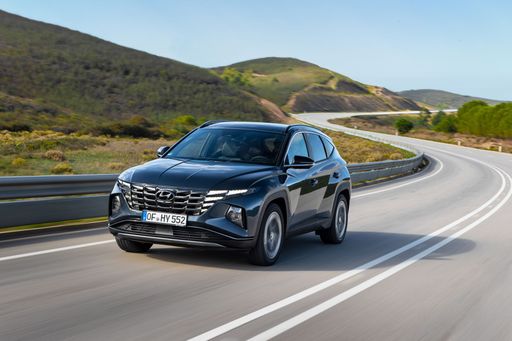
Hyundai Tucson
Hyundai Tucson
The Hyundai Tucson is a standout choice in the compact SUV segment, offering a perfect blend of style, comfort, and practicality. Its modern design is complemented by a spacious interior that provides ample room for passengers and luggage alike. With advanced technology and safety features, the Tucson ensures a smooth and enjoyable driving experience.
details @ hyundai.news
@ hyundai.news
 @ hyundai.news
@ hyundai.news
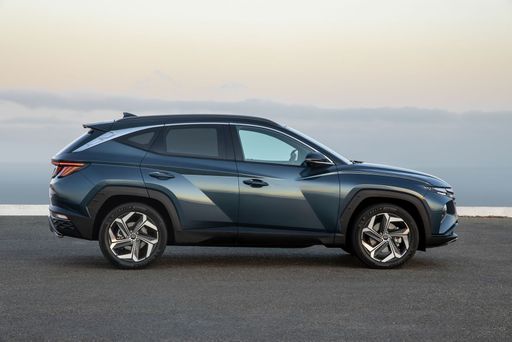 @ hyundai.news
@ hyundai.news
 @ hyundai.news
@ hyundai.news
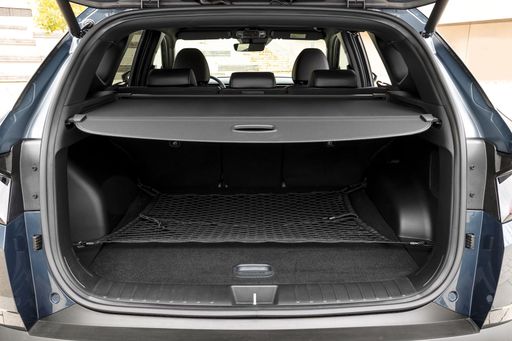 @ hyundai.news
@ hyundai.news
Land Rover Discovery
The Land Rover Discovery continues to set the benchmark for versatility and capability in the luxury SUV segment, seamlessly combining rugged off-road performance with sophisticated on-road comfort. Its spacious interior is thoughtfully designed, providing ample room for passengers and cargo, making it an ideal choice for both family adventures and professional use. With its distinctive and timeless design, the Discovery remains a strong contender for those seeking a blend of practicality and elegance.
details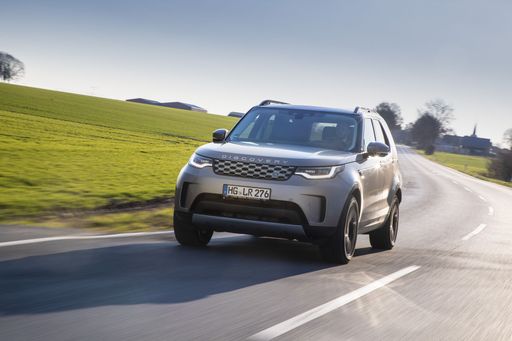 @ media.landrover.com
@ media.landrover.com
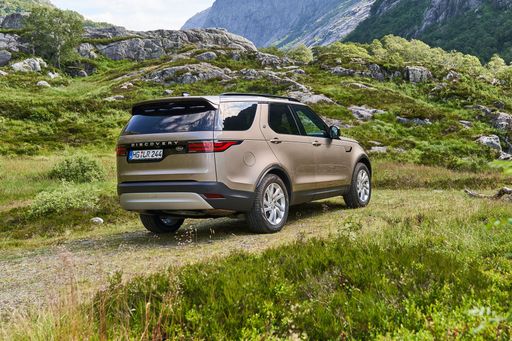 @ media.landrover.com
@ media.landrover.com
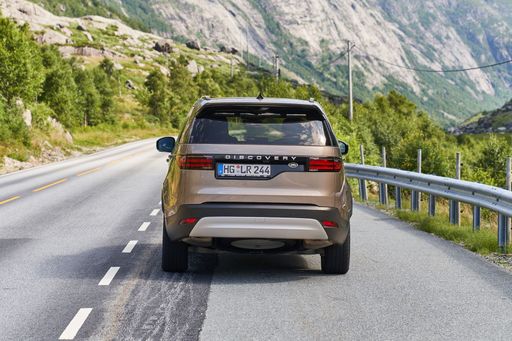 @ media.landrover.com
@ media.landrover.com
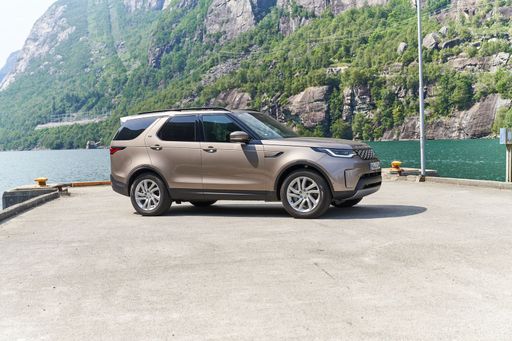 @ media.landrover.com
@ media.landrover.com
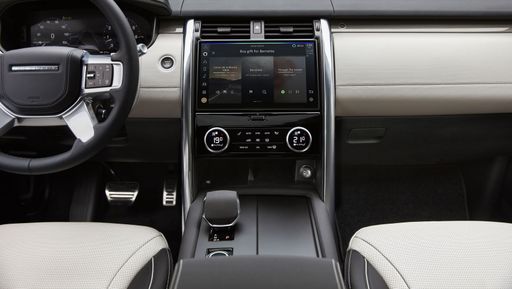 @ media.landrover.com
@ media.landrover.com

|

|
|
|
|
Costs and Consumption |
|
|---|---|
|
Price
30600 - 46300 £
|
Price
67400 - 96900 £
|
|
Consumption L/100km
1 - 6.9 L
|
Consumption L/100km
8.4 - 8.6 L
|
|
Consumption kWh/100km
-
|
Consumption kWh/100km
-
|
|
Electric Range
64 - 70 km
|
Electric Range
-
|
|
Battery Capacity
-
|
Battery Capacity
-
|
|
co2
22 - 156 g/km
|
co2
221 - 224 g/km
|
|
Fuel tank capacity
42 - 54 L
|
Fuel tank capacity
89 L
|
Dimensions and Body |
|
|---|---|
|
Body Type
SUV
|
Body Type
Off-Roader
|
|
Seats
5
|
Seats
5 - 7
|
|
Doors
5
|
Doors
5
|
|
Curb weight
1520 - 1889 kg
|
Curb weight
2391 - 2442 kg
|
|
Trunk capacity
546 - 620 L
|
Trunk capacity
172 - 986 L
|
|
Length
4510 - 4520 mm
|
Length
4956 mm
|
|
Width
1865 mm
|
Width
2073 mm
|
|
Height
1650 mm
|
Height
1846 mm
|
|
Max trunk capacity
1721 - 1799 L
|
Max trunk capacity
1997 - 2061 L
|
|
Payload
525 - 545 kg
|
Payload
689 - 803 kg
|
Engine and Performance |
|
|---|---|
|
Engine Type
Diesel MHEV, Petrol MHEV, Petrol, Full Hybrid, Plugin Hybrid
|
Engine Type
Diesel MHEV
|
|
Transmission
Automatic, Manuel
|
Transmission
Automatic
|
|
Transmission Detail
Dual-Clutch Automatic, Manual Gearbox, Automatic Gearbox
|
Transmission Detail
Automatic Gearbox
|
|
Drive Type
Front-Wheel Drive, All-Wheel Drive
|
Drive Type
All-Wheel Drive
|
|
Power HP
136 - 252 HP
|
Power HP
249 - 350 HP
|
|
Acceleration 0-100km/h
7.9 - 11.6 s
|
Acceleration 0-100km/h
6.3 - 8.1 s
|
|
Max Speed
180 - 194 km/h
|
Max Speed
194 - 209 km/h
|
|
Torque
265 - 367 Nm
|
Torque
570 - 700 Nm
|
|
Number of Cylinders
4
|
Number of Cylinders
6
|
|
Power kW
100 - 185 kW
|
Power kW
183 - 257 kW
|
|
Engine capacity
1598 cm3
|
Engine capacity
2997 cm3
|
General |
|
|---|---|
|
Model Year
2024
|
Model Year
2024 - 2025
|
|
CO2 Efficiency Class
E, F, D, B
|
CO2 Efficiency Class
G
|
|
Brand
Hyundai
|
Brand
Land Rover
|
What drive types are available for the Hyundai Tucson?
Available configurations include Front-Wheel Drive or All-Wheel Drive.
The prices and data displayed are estimates based on German list prices and may vary by country. This information is not legally binding.
